| Home | Nature Weekly Index |
8 May 2016 | Land and Aquatic Snails | Cyclotropis scalaris | Pseudosuccinea columella |
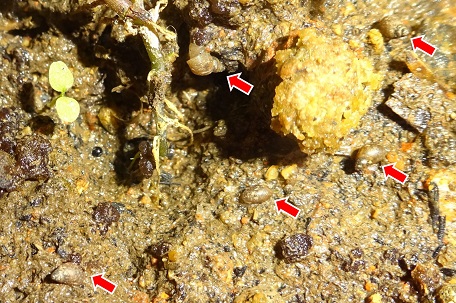
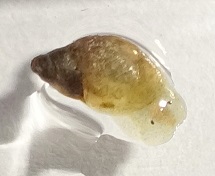 On my routine inspection of my pots along the balcony last week, I discovered some tiny snails in one of the smaller pot.
With a much shorter and broader shell, it was definitely not the
Miniature Awlsnail (Subulina octona) which is a common
snail species among the pots. The length of the mysterious snail was about 4 millimetres (mm) long. After browsing through
the pocket-size Singapore molluscs guide published by Science Centre, my deduction is
Cyclotropis scalaris. The small pot is where I
grew a small plant, Cardamine hirsuta, in the pot and had been
keeping the soil moist most of the time. I searched the other pots for the snail but did not find anything. The colour of
the snails resembled that of the soil which helped to conceal their existence.
On my routine inspection of my pots along the balcony last week, I discovered some tiny snails in one of the smaller pot.
With a much shorter and broader shell, it was definitely not the
Miniature Awlsnail (Subulina octona) which is a common
snail species among the pots. The length of the mysterious snail was about 4 millimetres (mm) long. After browsing through
the pocket-size Singapore molluscs guide published by Science Centre, my deduction is
Cyclotropis scalaris. The small pot is where I
grew a small plant, Cardamine hirsuta, in the pot and had been
keeping the soil moist most of the time. I searched the other pots for the snail but did not find anything. The colour of
the snails resembled that of the soil which helped to conceal their existence.
Moving over to the aquatic snails, my interest on them had increase since the installation of my first mini-aquarium back in March last year. Besides watching my potted plants, I had also been paying attention to these snails, partly to control their population in the tanks. I added an even smaller tank in March this year to try to breed the baby fishes produced by the Molly fish. So far, the breeding was not very successful with a low survival rate. However, the snail population was thriving. So far, I had already found 5 different aquatic snails after I started dealing with the fish tanks.
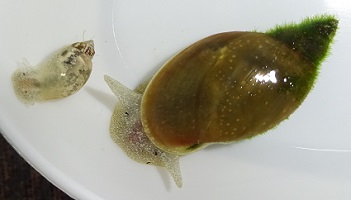
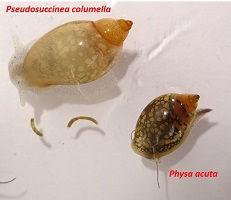 While staring at the some of the snails in the tanks yesterday, I was wondering why the tentacles of the
Tadpole Snail (Physa acuta) looked so different from
each other. At first, I thought the tentacles became broader as the snail aged since the larger ones had broader tentacles.
Closer look at some smaller snails confirmed that they do have broader tentacles as well. I began to suspect that those
snails with broader and shorter tentacles might be from another species.
While staring at the some of the snails in the tanks yesterday, I was wondering why the tentacles of the
Tadpole Snail (Physa acuta) looked so different from
each other. At first, I thought the tentacles became broader as the snail aged since the larger ones had broader tentacles.
Closer look at some smaller snails confirmed that they do have broader tentacles as well. I began to suspect that those
snails with broader and shorter tentacles might be from another species.
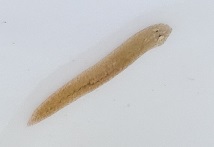 I looked at pictures of some Lymnaea species but did not find any that resembled the one in my tanks. Eventually, I
landed on
Mimic Lymnaea Snail (Pseudosuccinea columella)
which was the closest I could get. Although this snail was native to North America, it had been reported in Australia. As
this snail is so widespread around the world, there is a possibility that it had already landed in Singapore, probably quite
a while back. Base on my observation, Pseudosuccinea columella can grow to a relatively large size of about 30 mm in
length while Physa acuta stays around 10 mm.
I looked at pictures of some Lymnaea species but did not find any that resembled the one in my tanks. Eventually, I
landed on
Mimic Lymnaea Snail (Pseudosuccinea columella)
which was the closest I could get. Although this snail was native to North America, it had been reported in Australia. As
this snail is so widespread around the world, there is a possibility that it had already landed in Singapore, probably quite
a while back. Base on my observation, Pseudosuccinea columella can grow to a relatively large size of about 30 mm in
length while Physa acuta stays around 10 mm.
Recently, another strange slug-like creature appeared in the baby tank. It was about 5 mm long and 1 mm in width. At first, I thought that it might be an aquatic slug. Further check narrow it down to a flatworm or planarian. With no bigger fish around, this flatworm appeared to thrive well and come out in droves when fish food was served.